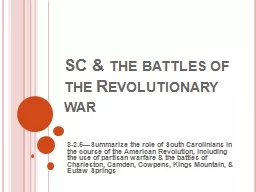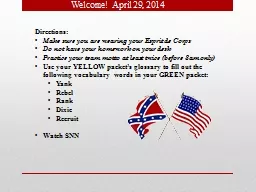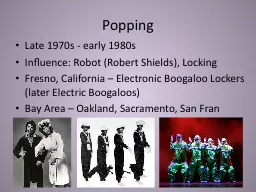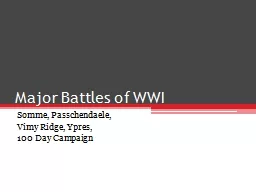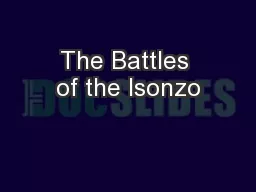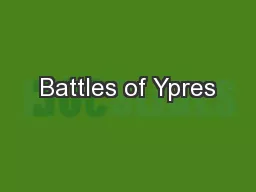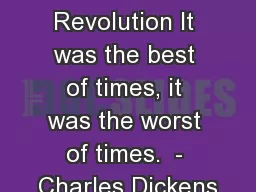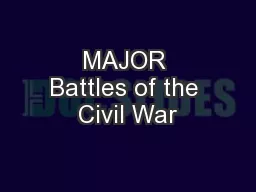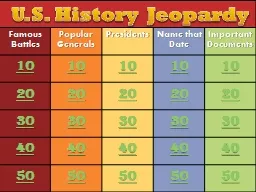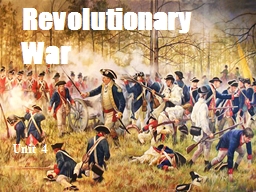PPT-SC & the battles of the Revolutionary war
Author : sherrill-nordquist | Published Date : 2017-04-03
825Summarize the role of South Carolinians in the course of the American Revolution including the use of partisan warfare amp the battles of Charleston Camden Cowpens
Presentation Embed Code
Download Presentation
Download Presentation The PPT/PDF document "SC & the battles of the Revolutionar..." is the property of its rightful owner. Permission is granted to download and print the materials on this website for personal, non-commercial use only, and to display it on your personal computer provided you do not modify the materials and that you retain all copyright notices contained in the materials. By downloading content from our website, you accept the terms of this agreement.
SC & the battles of the Revolutionary war: Transcript
Download Rules Of Document
"SC & the battles of the Revolutionary war"The content belongs to its owner. You may download and print it for personal use, without modification, and keep all copyright notices. By downloading, you agree to these terms.
Related Documents

